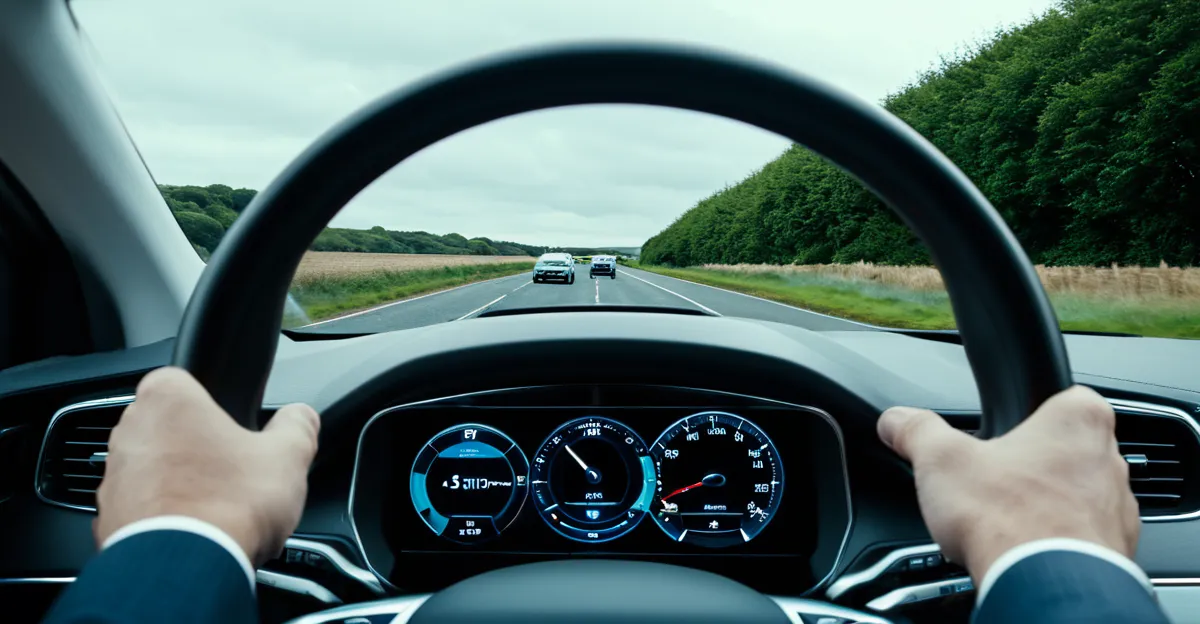Key Challenges Facing Autonomous Vehicles in the UK
Navigating UK autonomous vehicle challenges involves tackling several critical barriers that influence both technological progress and public adoption. Safety remains paramount; ensuring self-driving technology operates flawlessly in diverse, unpredictable environments is complex. The technology faces risks such as sensor failures or software errors, which must be rigorously mitigated to comply with stringent UK safety standards.
Regulation compliance represents another significant hurdle. The UK’s legal framework for autonomous vehicles is evolving but still presents uncertainties for developers and manufacturers. Clear, adaptive legislation is essential to encourage innovation while safeguarding public interests.
Also to see : What are the challenges of autonomous vehicle integration in the UK?
Public acceptance also influences the pace of deployment. Skepticism about trustworthiness and reliability of self-driving technology persists, often driven by concerns over safety risks. Overcoming this requires transparent communication, education, and proven real-world performance.
Infrastructure limitations compound these issues. UK roads vary widely, from congested urban areas to rural regions, and adapting existing road networks to support autonomous vehicles demands investment in smart sensors and connected communication systems. Unique UK-specific factors, such as weather conditions and complex road layouts, further challenge technology robustness and scalability. Addressing these combined industry barriers is crucial for successful autonomous vehicle integration in the UK.
Also to read : How Are Electric Cars Shaping the Future of UK’s Automotive Industry?
Regulatory Strategies and Government Initiatives
The UK government policies play a pivotal role in overcoming UK autonomous vehicle challenges by establishing a clear legislative environment. Recent advances in autonomous vehicle legislation have focused on creating adaptable frameworks that balance safety with innovation. For example, updated regulations allow controlled testing of autonomous vehicles on public roads, addressing previous uncertainties.
A defined national strategy underpins these efforts, coordinated through government departments committed to technological progress. This strategy promotes collaboration between public agencies and private developers, ensuring that legal requirements keep pace with rapid advancements in self-driving technology.
Further, government-backed research programs channel funding towards innovation hubs, fostering development in areas such as sensor accuracy and AI decision-making. This investment not only mitigates self-driving technology risks but also supports robust validation processes essential for public safety.
By prioritising legislation that facilitates controlled trials and supports infrastructure adaptation, the UK is addressing multiple industry barriers simultaneously. These proactive policies reflect an understanding of the complex ecosystem needed for autonomous vehicles to thrive within the UK’s unique transport landscape.
Collaborative Industry Efforts and Leading Innovations
Collaboration within the UK automotive industry is pivotal in overcoming UK autonomous vehicle challenges and addressing critical self-driving technology risks. Industry partnerships unite major manufacturers, technology firms, and research institutions to accelerate development and deployment of autonomous solutions. This cooperative approach pools expertise, resources, and testing infrastructure, enabling faster innovation cycles and more robust technologies.
Several high-profile autonomous vehicle projects exemplify this synergy. For instance, consortia have launched trials integrating advanced sensors and AI decision-making across complex UK urban environments, demonstrating practical solutions for safety and navigation. These projects provide valuable data to refine systems and validate against stringent UK industry barriers, such as unpredictable weather effects and diverse road conditions.
Moreover, cross-sector collaborations support the creation of shared platforms for real-time data exchange and connectivity enhancements, vital for coordinated vehicle operation and infrastructure interaction. Such efforts enhance the scalability and reliability of autonomous vehicles, directly addressing safety concerns.
By fostering continuous engagement between stakeholders, the UK automotive industry positions itself at the forefront of global autonomous mobility innovation—ensuring solutions meet both regulatory demands and public expectations while mitigating inherent self-driving technology risks.
Integrating Safety and Technology Solutions
Ensuring the highest vehicle safety standards is vital to overcoming UK autonomous vehicle challenges. Rigorous autonomous systems testing involves multiple layers, from controlled environments to real-world conditions, addressing self-driving technology risks such as sensor inaccuracies or AI decision errors. Frequent validation examines how autonomous systems respond to complex traffic scenarios, including adverse weather and unpredictable human behaviours encountered on UK roads.
Advanced driver-assistance technologies (ADAS) complement full autonomy by providing critical functionalities like emergency braking, adaptive cruise control, and lane-keeping assistance. These systems act as safeguards, reducing accident risks during transitional phases where manual and autonomous control may interchange. The development of sophisticated AI algorithms enhances decision-making, relying on real-time data input to improve responsiveness and safety.
Innovation hubs in the UK focus heavily on sensor integration, combining radar, lidar, and camera systems for multi-modal perception. This fusion mitigates single-point failures, addressing key industry barriers. In short, integrating cutting-edge technology with strict safety protocols creates a robust foundation for public trust and regulatory approval under UK autonomous vehicle challenges.
Addressing Public Perception and Infrastructural Readiness
Building public trust in autonomous vehicles remains a significant UK autonomous vehicle challenge. Consumers often question the reliability and safety of self-driving technology due to self-driving technology risks like AI decision errors or sensor failures. Transparent communication highlighting successful pilot programs and real-world testing data helps alleviate these concerns. Educational campaigns can foster understanding by explaining how autonomous systems handle complex scenarios better than human drivers in some cases.
Infrastructure readiness is equally critical. The UK’s road networks require substantial upgrades to support the unique demands of autonomous vehicles. Investments in self-driving infrastructure focus on smart traffic signals, connected vehicle-to-infrastructure communication, and comprehensive sensor installations. These enhancements improve navigation accuracy and system responsiveness, directly addressing major industry barriers related to varied road conditions and weather impacts.
To advance consumer acceptance UK-wide, urban planning increasingly incorporates dedicated lanes or zones for autonomous vehicles, enhancing safety and integrating these vehicles smoothly into everyday traffic flows. Pilot cities demonstrate how infrastructure modifications and public engagement work hand-in-hand. Ultimately, tackling these public perception issues and infrastructure limitations is fundamental to widespread autonomous vehicle adoption across the UK.






